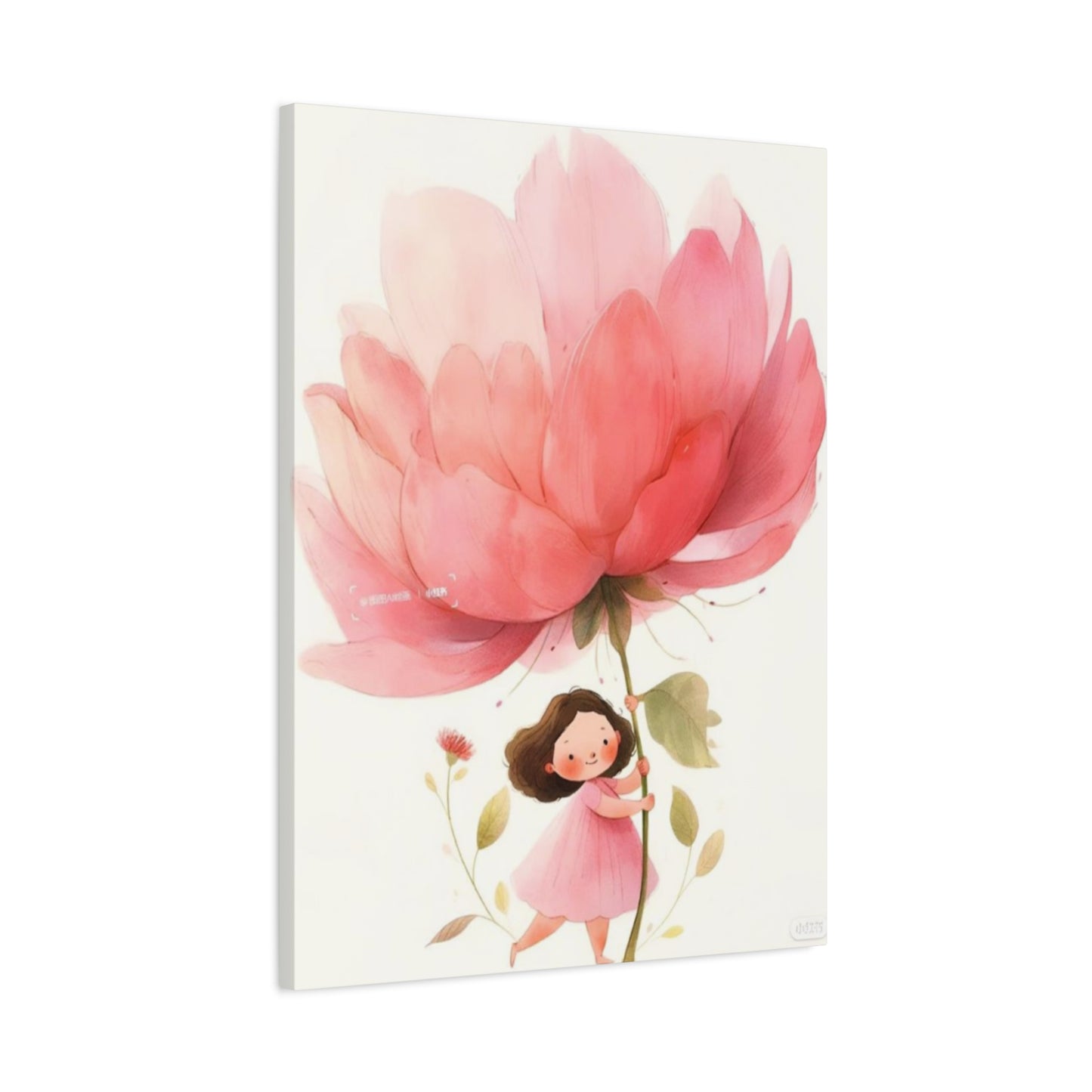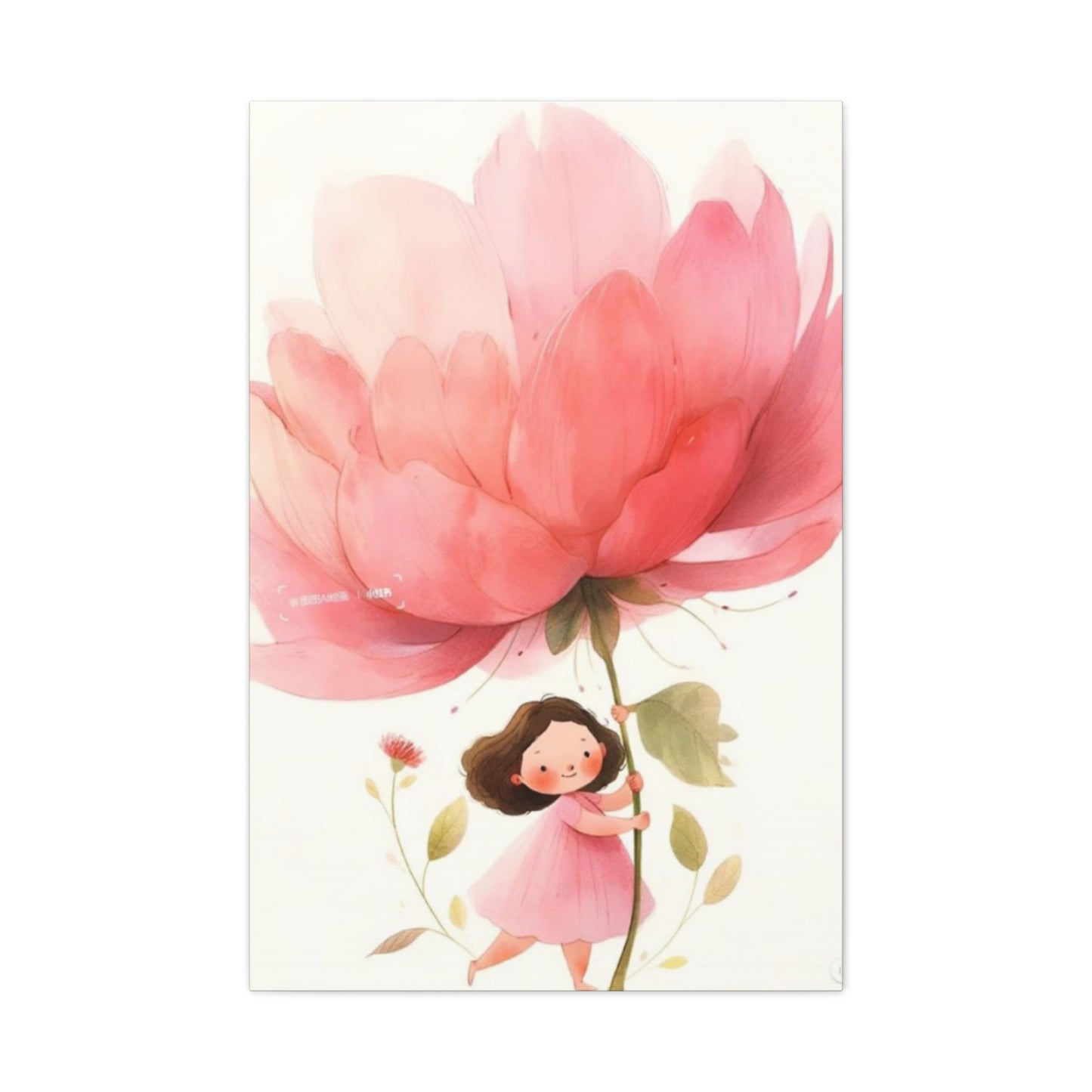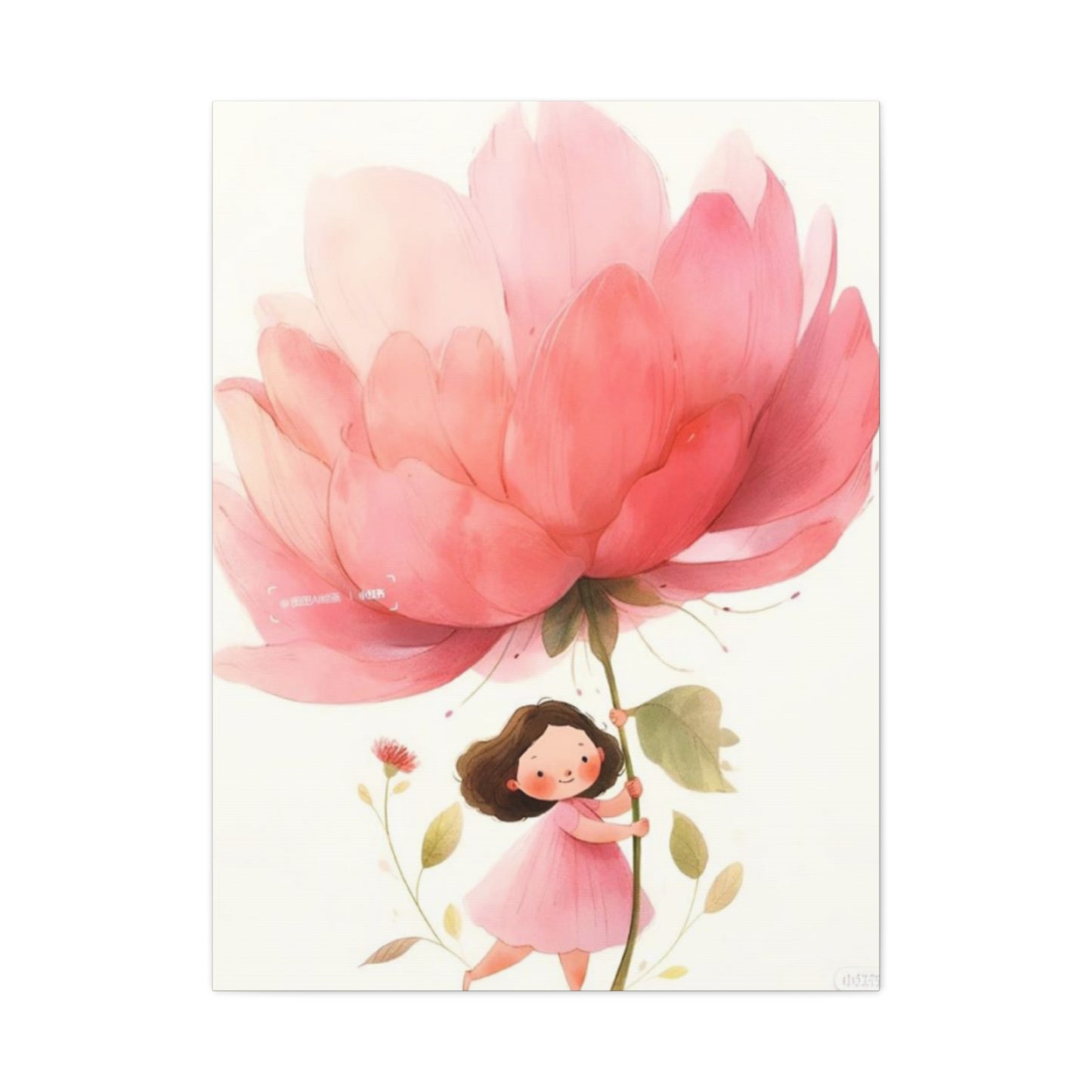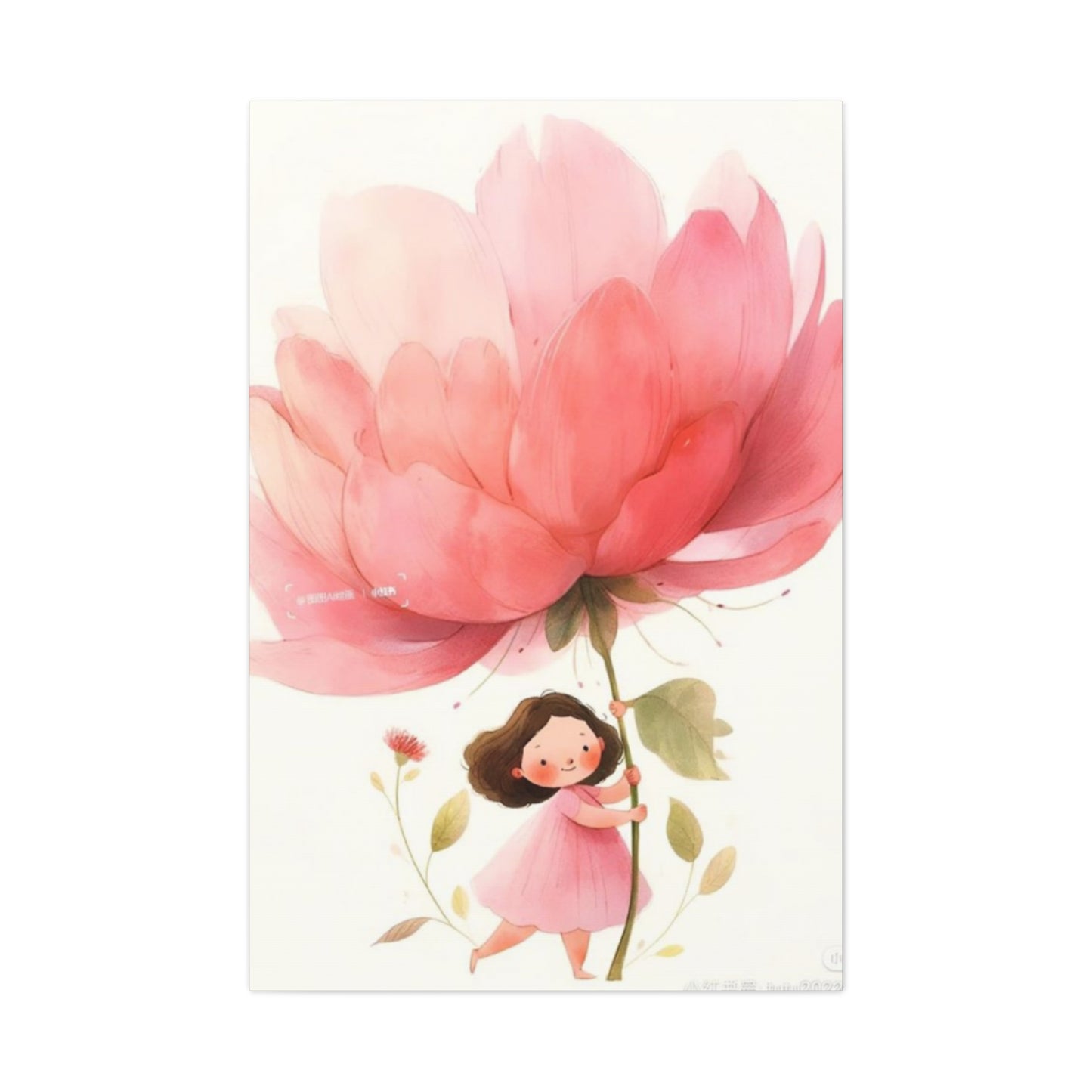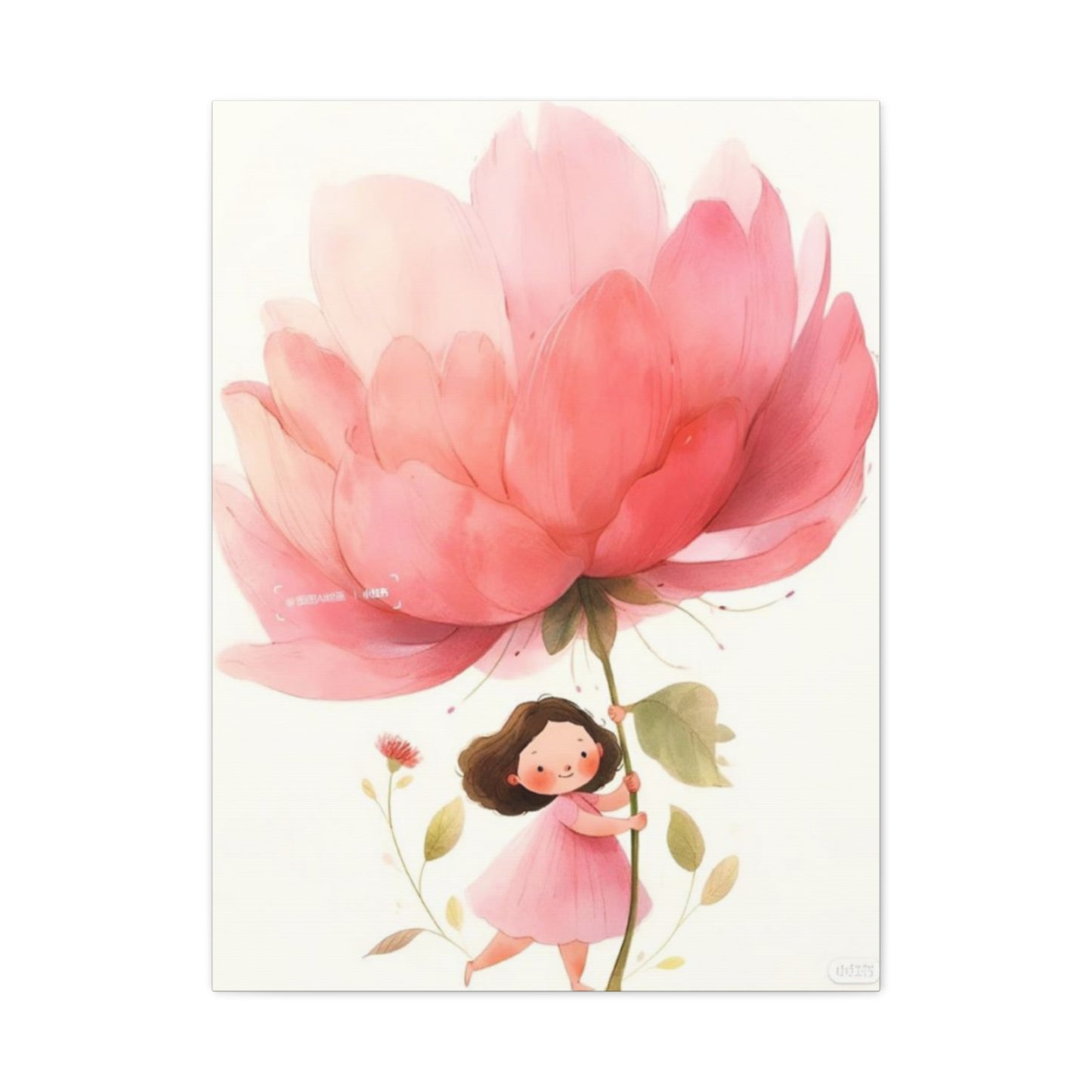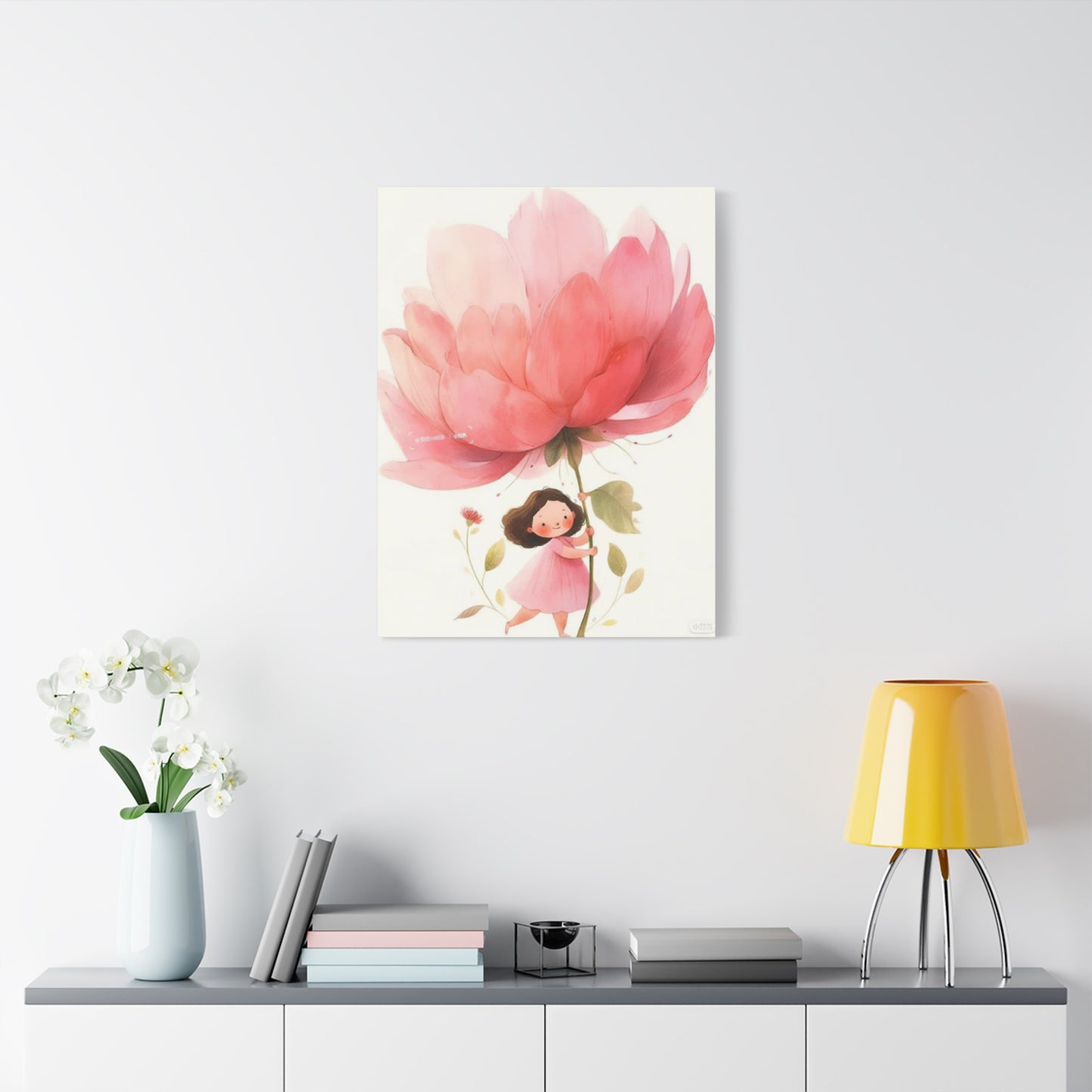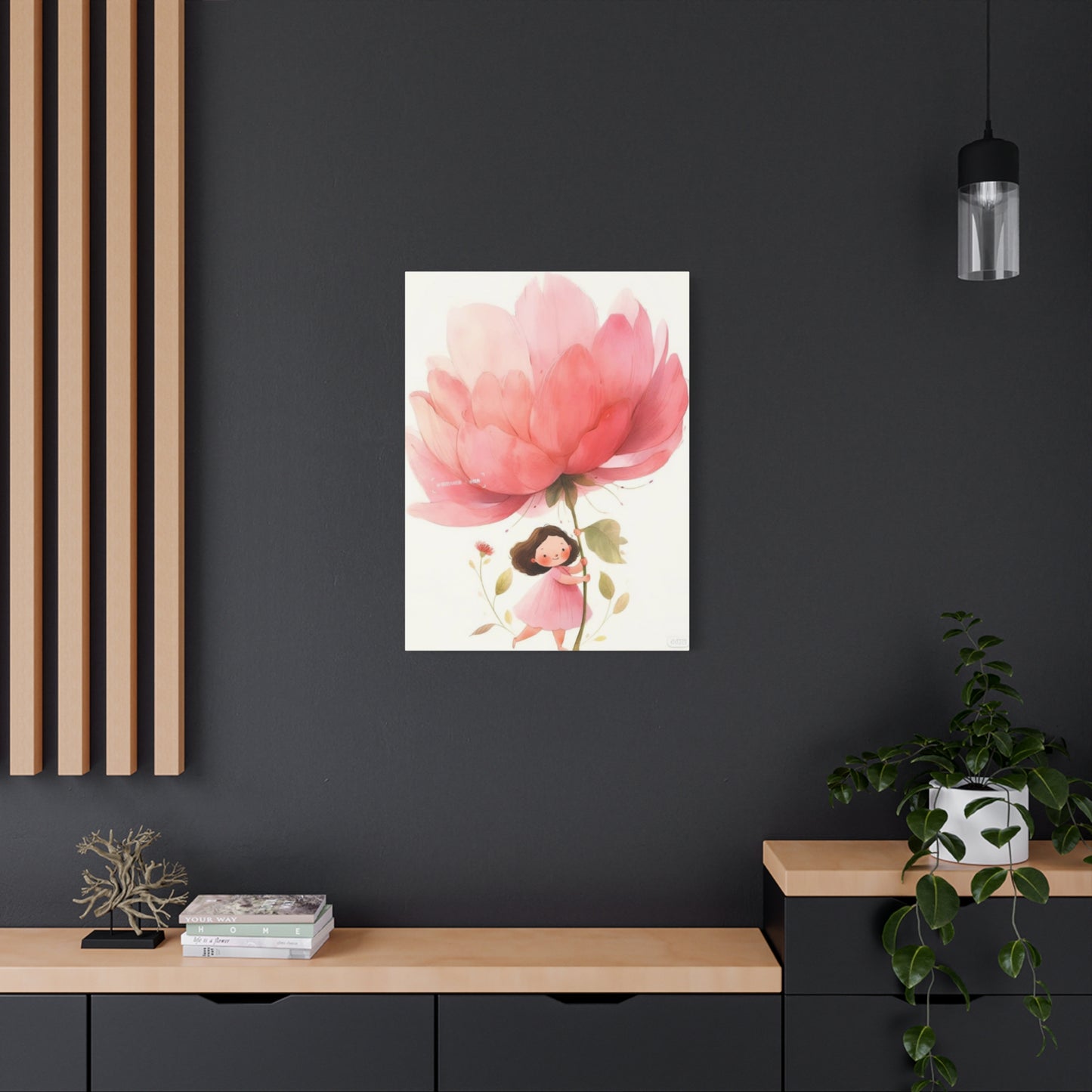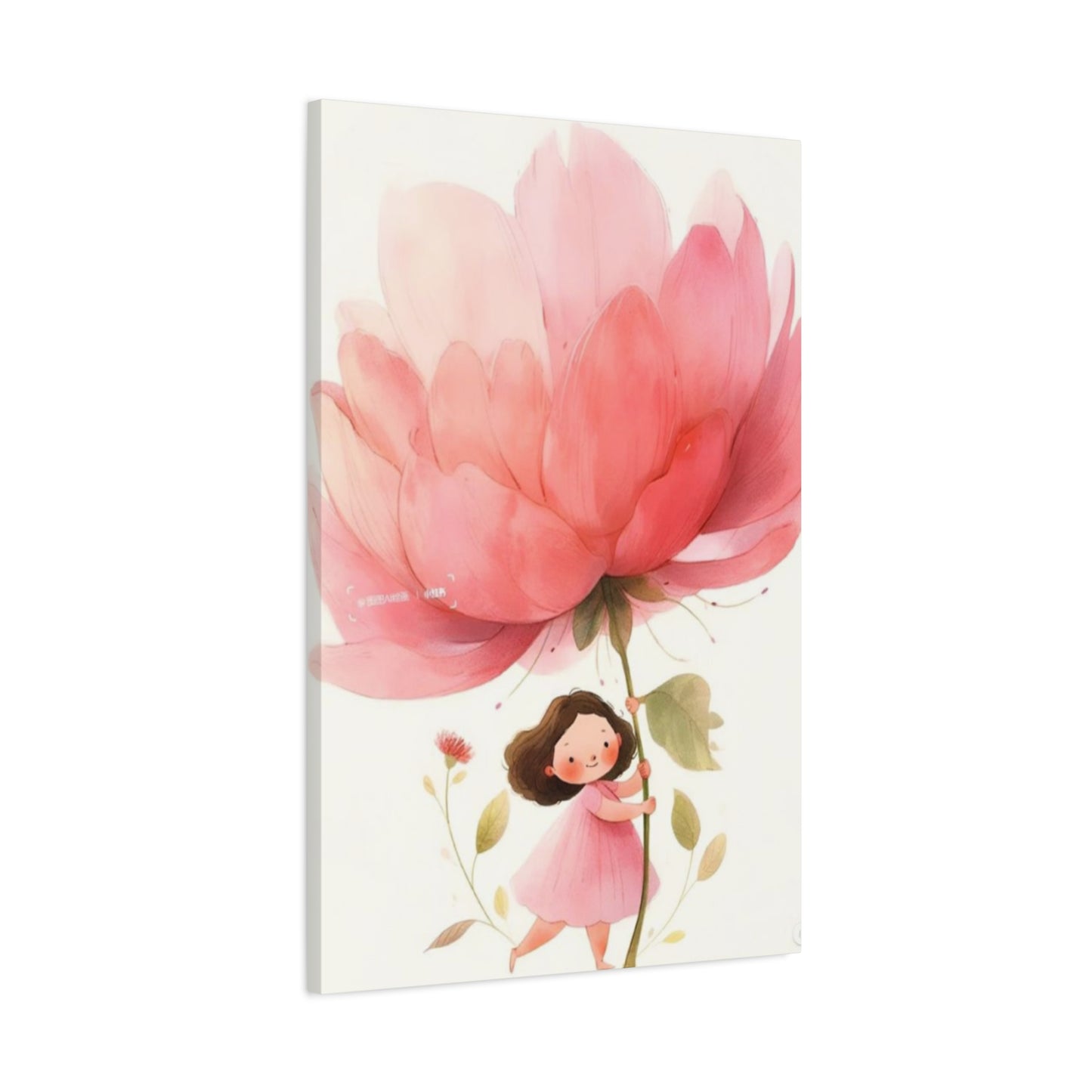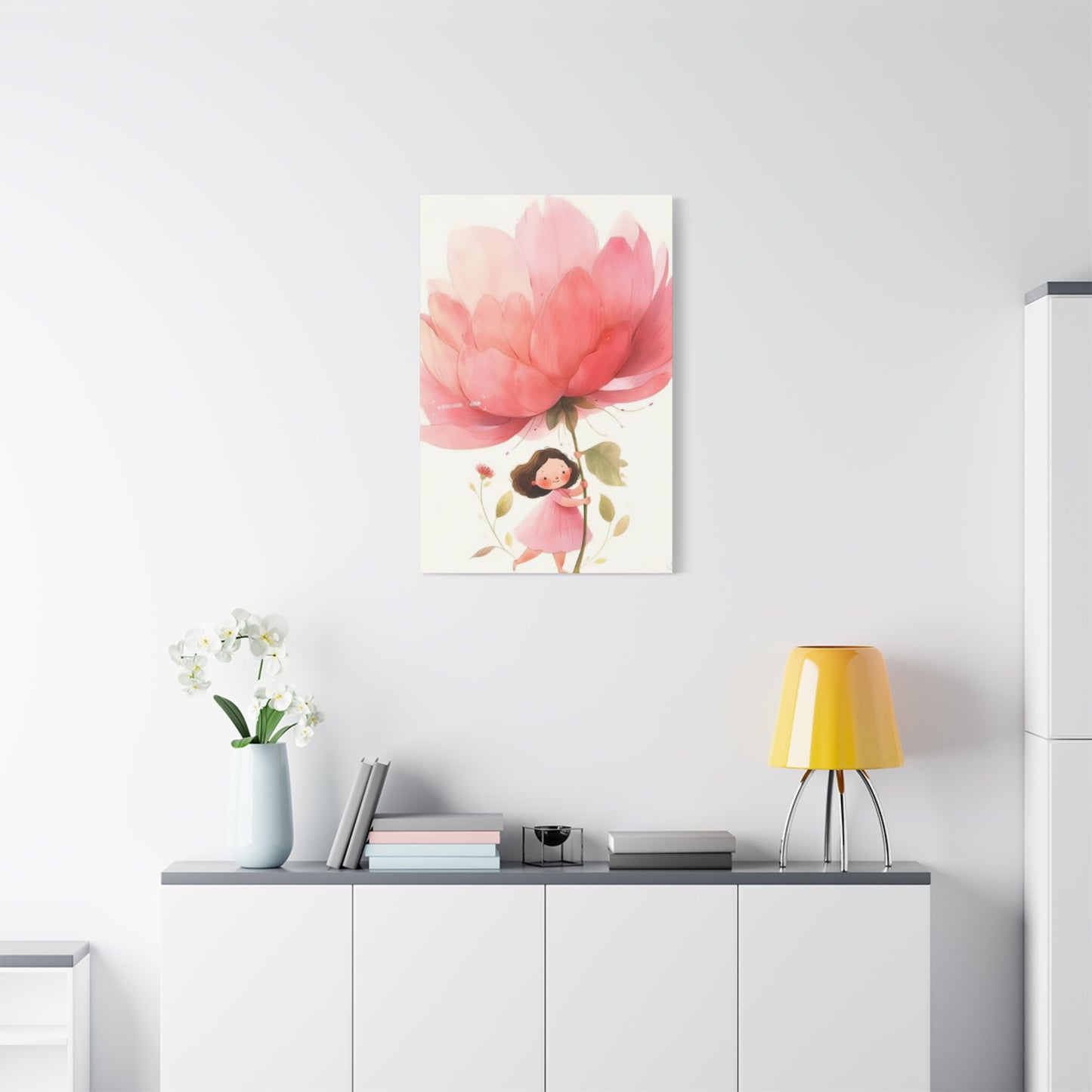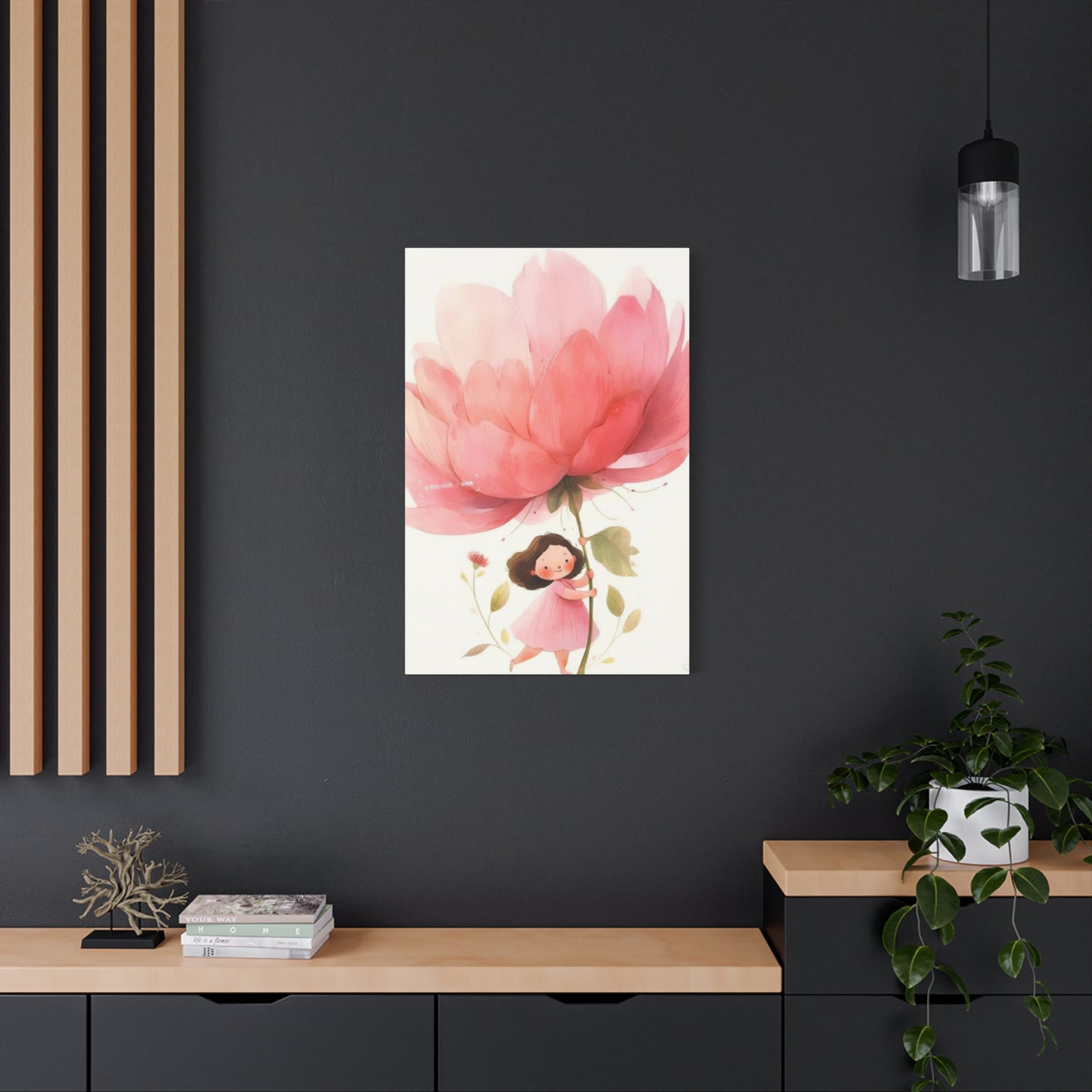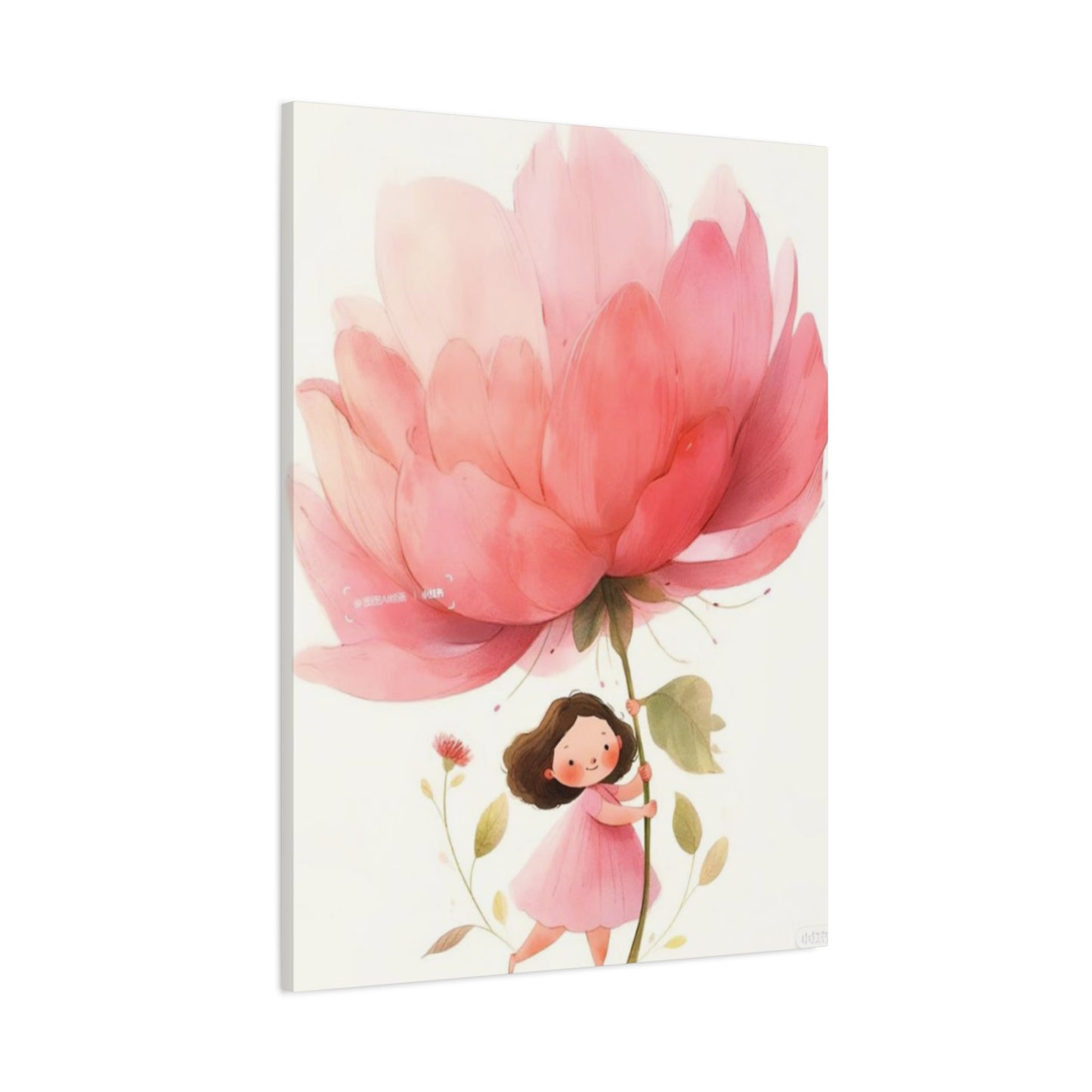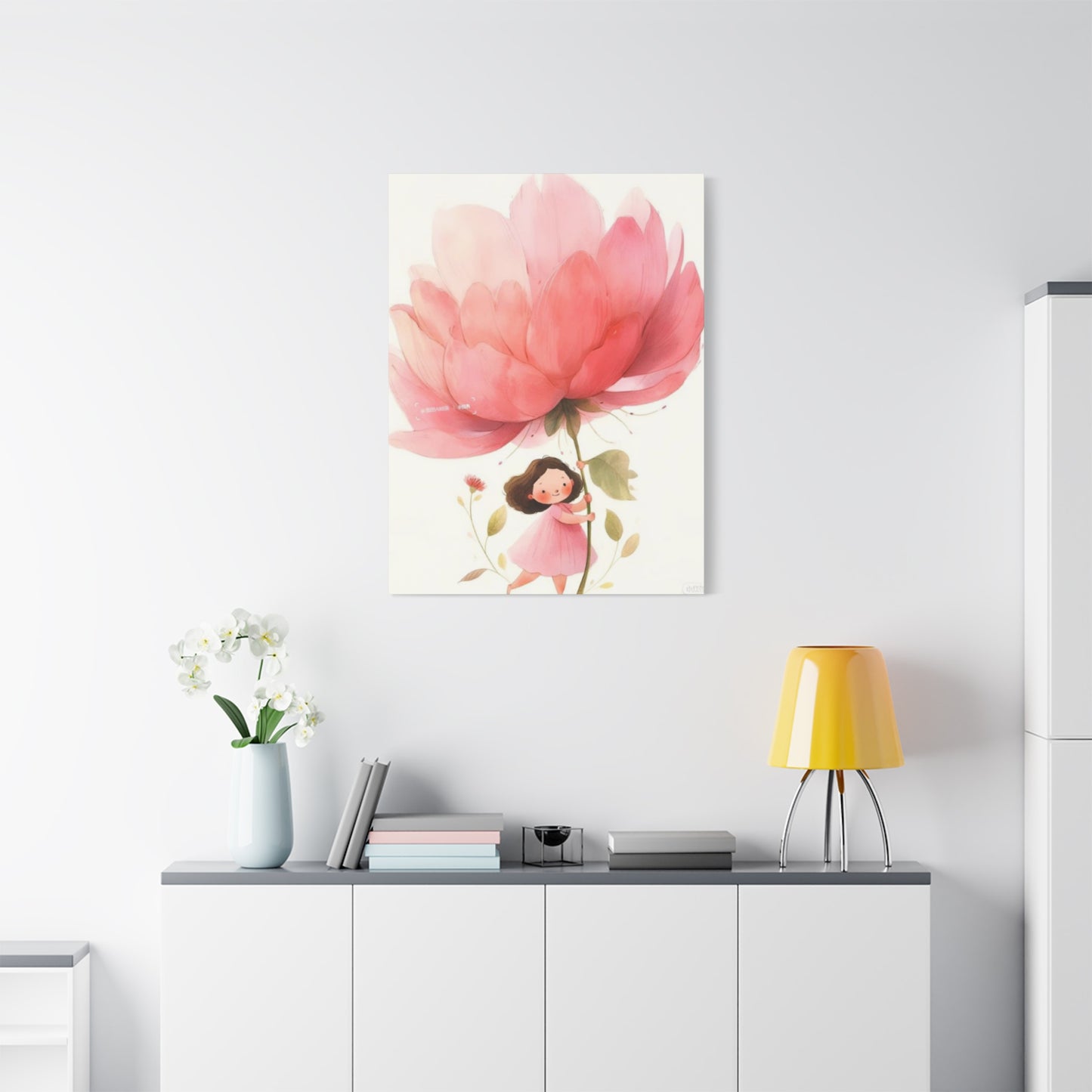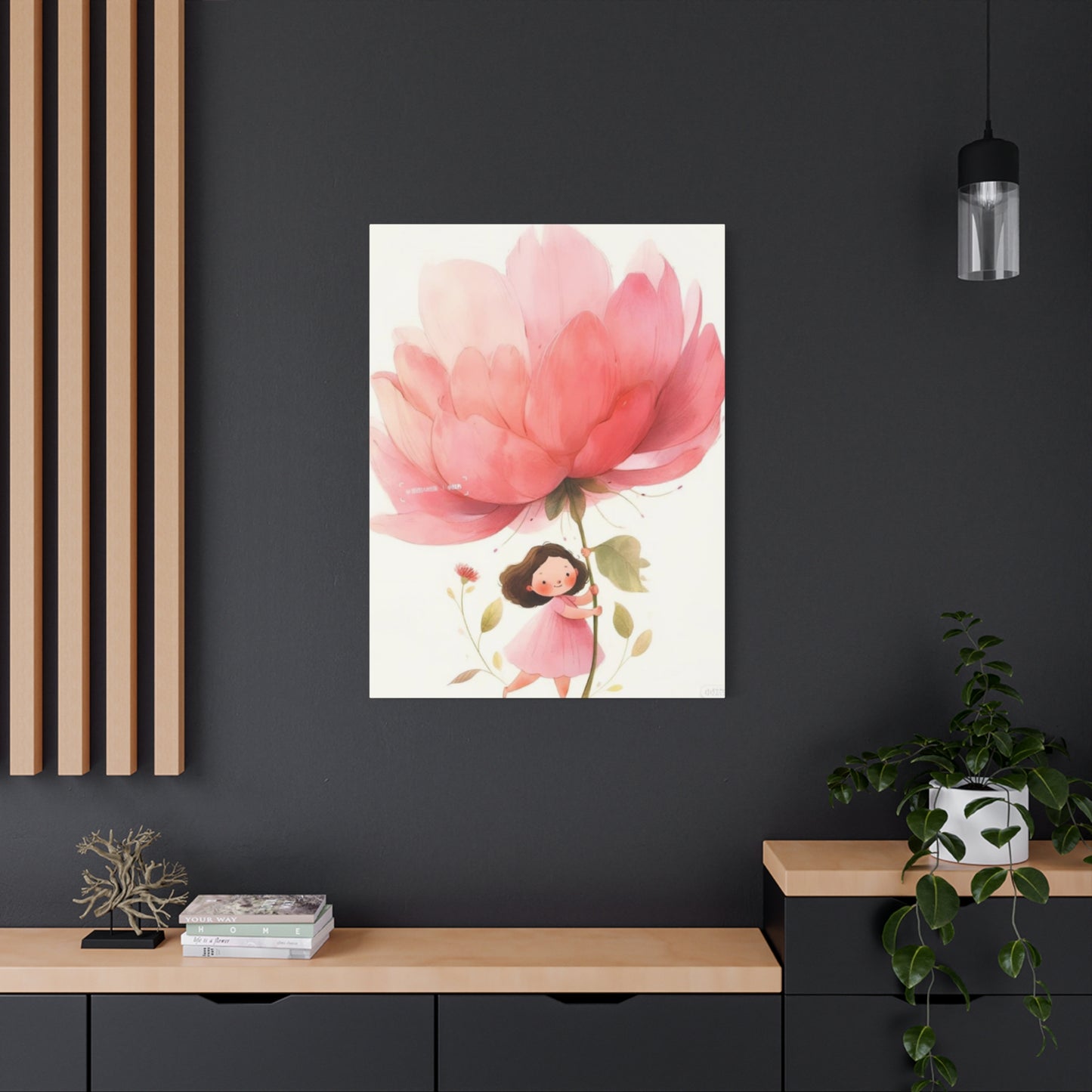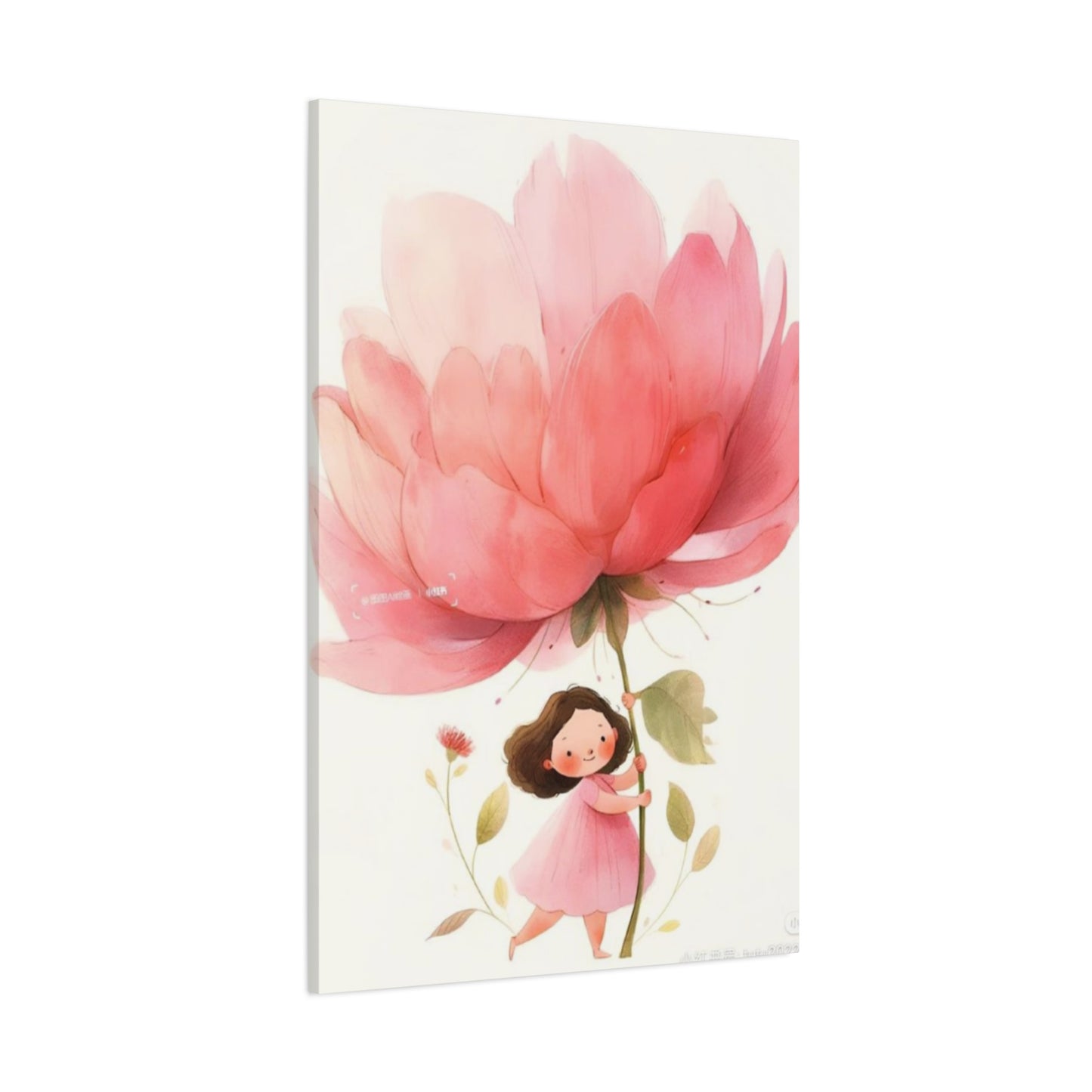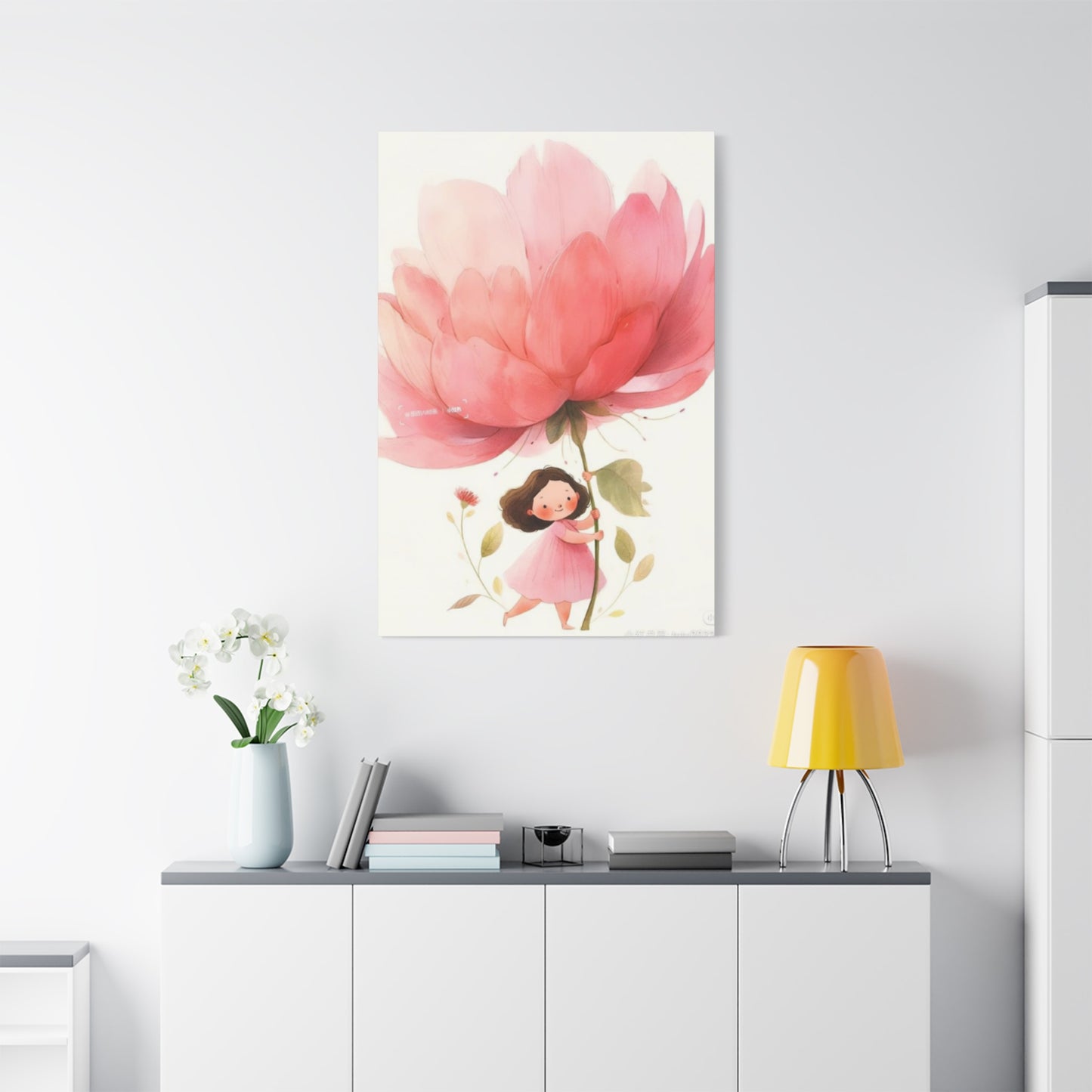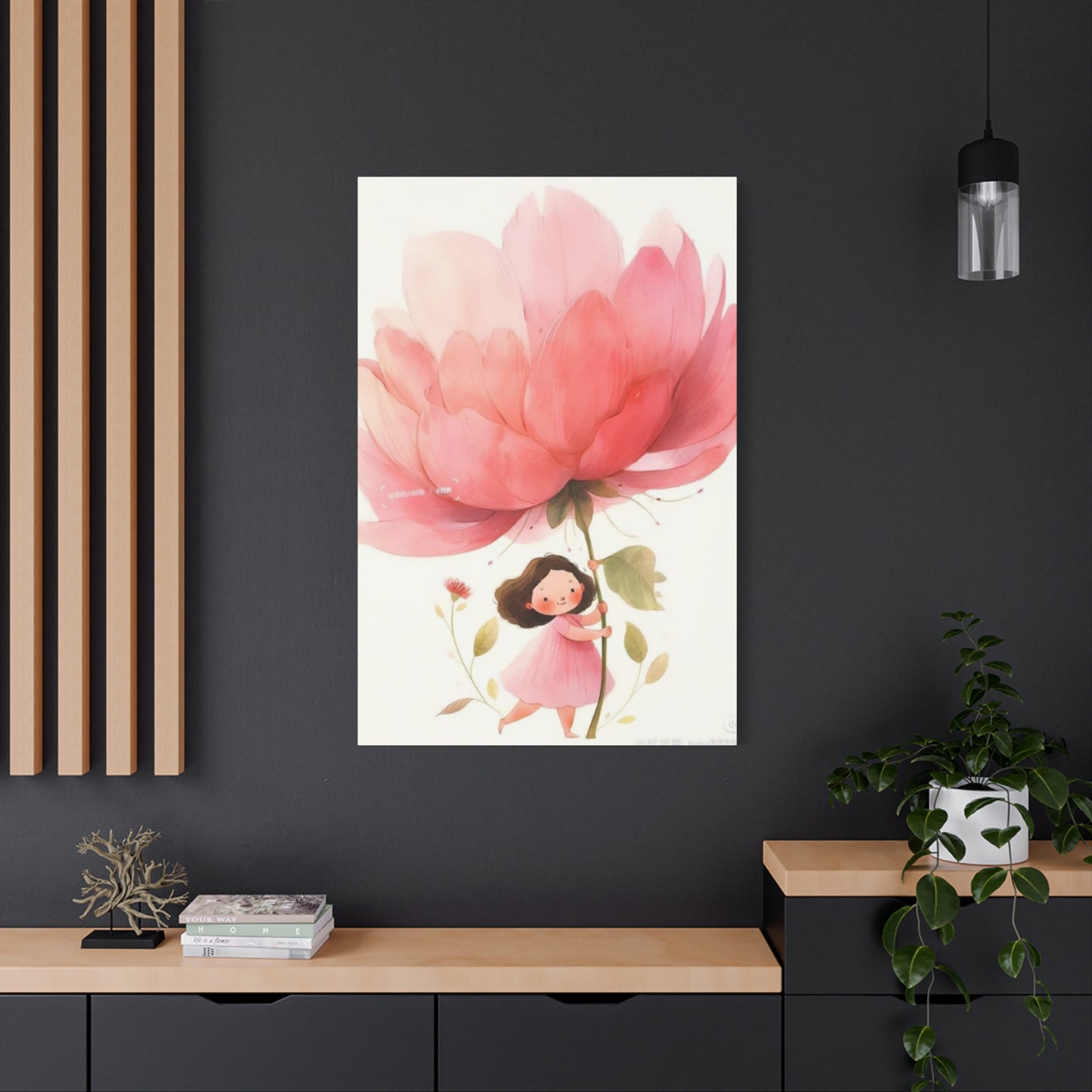Magical Girl with Flower Fairies Wall Art Canvas Prints for Whimsical Home Decoration
The enchanting world of fairy-themed artwork has captivated hearts and homes for generations, bringing a touch of magic and wonder into living environments. Among the most beloved artistic themes, girl with flower fairies wall art canvas prints stand out as particularly mesmerizing decorative elements that transform ordinary rooms into extraordinary realms of imagination. These captivating pieces combine the innocence of childhood with the mystical beauty of fairy folklore, creating artwork that speaks to both young and old alike.
Canvas prints featuring girls accompanied by flower fairies offer an exceptional way to infuse any room with whimsy, color, and storytelling potential. The artistic representation of young maidens surrounded by delicate fairy creatures among blooming flowers creates a narrative that viewers can explore and interpret in countless ways. Each piece tells a unique story, whether it depicts a quiet moment of friendship between a girl and her fairy companions or captures an adventurous scene in an enchanted garden filled with magical beings.
The appeal of these artistic creations extends far beyond their visual beauty. They represent a connection to nature, magic, and the boundless imagination that characterizes childhood wonder. When displayed prominently in homes, these canvas prints serve as conversation starters, mood enhancers, and sources of daily inspiration that remind viewers of the magic that exists in everyday life.
Artistic Elements That Define Fairy-Themed Canvas Art
The creation of compelling girl with flower fairies wall art canvas prints requires careful attention to numerous artistic elements that work together to create cohesive and engaging visual narratives. Color palettes play a crucial role in establishing the magical atmosphere that these pieces are known for. Soft pastels including lavender, rose pink, sage green, and creamy yellows often dominate these compositions, creating a dreamlike quality that immediately transports viewers into a fantastical realm.
Composition techniques in fairy artwork typically employ flowing lines and organic shapes that mirror the natural world. Artists often use curved pathways, spiraling vines, and floating elements to guide the viewer's eye throughout the piece while maintaining the sense of movement and life that characterizes magical scenes. The placement of the central girl figure usually follows the rule of thirds, while fairy companions are strategically positioned to create visual balance and narrative flow.
Lighting effects in these canvas prints often simulate the golden hour or twilight conditions, casting warm glows that enhance the magical atmosphere. Artists frequently incorporate luminescent elements such as glowing fairy wings, sparkling flower petals, and shimmering dewdrops that catch and reflect light within the composition. These lighting choices contribute significantly to the overall enchantment factor that makes these pieces so appealing to collectors and decorators alike.
Texture representation adds another layer of visual interest to fairy-themed artwork. Artists skillfully render the delicate transparency of fairy wings, the soft petals of various flowers, and the flowing fabric of the girl's clothing to create tactile appeal even in two-dimensional representations. The contrast between different textures helps define separate elements within busy compositions while maintaining visual harmony throughout the piece.
The botanical elements featured in these canvas prints often include a wide variety of flowers, each chosen for both aesthetic appeal and symbolic meaning. Roses might represent love and beauty, while daisies symbolize innocence and purity. Lavender brings associations of peace and tranquility, and cherry blossoms suggest the fleeting nature of beauty and life. This symbolic layering adds depth to the artwork that viewers can discover and appreciate over time.
Development of Fairy Art in Contemporary Culture
The fascination with fairies in visual art has deep historical roots that extend back centuries, evolving from ancient folklore and mythology into the contemporary canvas prints that grace modern homes today. During the Victorian era, fairy paintings became particularly popular as artists like Richard Dadd and John Anster Fitzgerald created detailed works that brought fairy folklore into mainstream artistic consciousness. These historical precedents established many of the visual conventions that continue to influence modern fairy artwork.
The transition from traditional oil paintings to modern canvas prints has democratized access to fairy-themed artwork, making these magical images available to a broader audience than ever before. Digital reproduction technologies have allowed artists to maintain the intricate details and subtle color variations that make fairy artwork so compelling while producing affordable prints that can enhance homes of all economic levels.
Contemporary fairy art has evolved to incorporate modern artistic techniques and cultural influences while maintaining the timeless appeal that has made these themes enduringly popular. Current artists working in this genre often blend traditional fairy imagery with contemporary clothing styles, diverse character representations, and updated color palettes that reflect current aesthetic preferences while preserving the magical essence that defines the genre.
The influence of fantasy literature, animated films, and digital media has significantly shaped how modern artists approach fairy-themed subjects. Characters are often depicted with more dynamic poses and expressions than their historical counterparts, reflecting contemporary storytelling sensibilities that emphasize action and emotional engagement. This evolution has made fairy artwork more relatable and appealing to modern audiences while maintaining its connection to traditional fairy folklore.
Modern printing technologies have also expanded the possibilities for fairy artwork presentation. High-resolution digital printing allows for reproduction of incredibly fine details, while advances in canvas materials and ink formulations ensure that prints maintain their vibrancy and clarity over time. These technical improvements have made canvas prints a viable and attractive alternative to original paintings for most decorating purposes.
Fairy Imagery on Home Environments
The presence of girl with flower fairies wall art canvas prints in living environments creates measurable psychological effects that extend far beyond simple aesthetic enhancement. Research in environmental psychology has demonstrated that imagery depicting natural elements, fantastical scenes, and positive human-nature interactions can significantly improve mood, reduce stress levels, and enhance overall psychological wellbeing for occupants of decorated rooms.
The calming effect of fairy artwork stems partly from its frequent incorporation of natural elements such as flowers, trees, and garden settings. These botanical components trigger psychological responses associated with being in nature, even when experienced indirectly through artistic representation. Studies have shown that even viewing images of natural settings can lower cortisol levels and promote relaxation responses similar to those experienced during actual nature exposure.
The narrative aspect of fairy artwork also contributes to its psychological impact by engaging viewers' imagination and storytelling instincts. When people observe scenes depicting girls interacting with fairy creatures, their minds naturally construct stories about the relationships, adventures, and magical possibilities represented in the artwork. This mental engagement provides a form of escapism that can be particularly valuable for managing daily stress and maintaining emotional balance.
Color psychology plays a significant role in how fairy-themed canvas prints affect viewers' emotional states. The predominant use of soft, warm colors in these pieces tends to promote feelings of comfort, security, and optimism. Purple tones often found in fairy wings and magical elements are associated with creativity and spiritual awareness, while the green hues common in botanical elements promote feelings of growth, harmony, and renewal.
The presence of fairy artwork in children's rooms has been shown to stimulate imagination, encourage creative play, and provide comfort during nighttime hours. The gentle, protective nature often depicted in relationships between girls and fairy companions can help children feel safe and secure in their personal environments. For adults, these same images can serve as reminders of childhood wonder and the importance of maintaining connections to imagination and creativity throughout life.
Technical Aspects of Canvas Print Production for Fairy Artwork
The production of high-quality girl with flower fairies wall art canvas prints involves sophisticated technical processes that ensure faithful reproduction of original artwork while providing durability and longevity for home display. Understanding these technical aspects helps consumers make informed decisions about their purchases and properly care for their canvas prints over time.
Digital imaging technology forms the foundation of modern canvas print production. High-resolution scanning or photography of original artwork captures every detail, color nuance, and texture element present in the source material. Professional-grade scanners capable of resolving thousands of dots per inch ensure that even the finest details in fairy wings, flower petals, and facial expressions are accurately preserved in the digital file.
Color management systems play a crucial role in maintaining color accuracy throughout the production process. Professional print facilities use calibrated monitors, standardized lighting conditions, and color-managed workflows to ensure that the colors in the final canvas print match the artist's original intentions as closely as possible. This attention to color fidelity is particularly important for fairy artwork, where subtle color variations contribute significantly to the overall magical atmosphere.
Canvas material selection affects both the appearance and longevity of the final product. High-quality cotton canvas provides excellent ink absorption and color retention while maintaining the texture and feel that makes canvas prints appealing alternatives to paper prints. Poly-cotton blends offer enhanced durability and resistance to environmental factors while maintaining good print quality for most applications.
Ink formulations used in professional canvas printing are specifically designed to provide vibrant colors, smooth gradations, and long-term stability when exposed to normal indoor lighting conditions. Pigment-based inks generally offer superior longevity compared to dye-based alternatives, with properly produced prints maintaining their original appearance for decades when displayed under appropriate conditions.
Stretching and mounting processes require careful attention to ensure that canvas prints maintain proper tension and alignment over time. Professional mounting on wooden stretcher frames provides stability and prevents sagging, while proper corner construction and staple placement ensure that the print remains taut and wrinkle-free throughout its display life.
Color Theory Applications in Fairy-Themed Artwork
The effective use of color theory principles distinguishes exceptional girl with flower fairies wall art canvas prints from ordinary decorative images. Artists working in this genre must understand how different color combinations affect viewer emotions, create visual hierarchy, and contribute to the overall magical atmosphere that defines successful fairy artwork.
Complementary color schemes frequently appear in fairy artwork, with purple fairy elements contrasting against yellow or green botanical backgrounds to create visual vibration and energy. These high-contrast relationships draw attention to important focal points while maintaining overall harmony through careful balance of warm and cool tones throughout the composition.
Analogous color harmonies create the gentle, flowing transitions that characterize many fairy-themed pieces. Gradual shifts from pink to purple to blue, or from yellow to green to blue-green, provide visual continuity while maintaining interest through subtle variations in hue, saturation, and brightness. These smooth color progressions contribute to the dreamlike quality that viewers associate with magical scenes.
Temperature contrast plays a significant role in creating depth and atmosphere in fairy artwork. Cool blues and purples often represent mysterious or magical elements, while warm yellows, oranges, and pinks suggest comfort, joy, and natural sunlight. The interplay between warm and cool areas helps establish spatial relationships and emotional resonances within the composition.
Saturation levels require careful management to prevent fairy artwork from becoming overwhelming or garish. Highly saturated colors might be reserved for key magical elements such as glowing fairy wings or enchanted flowers, while more subdued tones provide visual rest areas and prevent color fatigue. This strategic use of saturation helps maintain viewer engagement over extended periods.
Tonal values create the underlying structure that supports color relationships in fairy artwork. Proper value contrast ensures that important elements remain visible and that the composition maintains clarity even when reproduced in smaller sizes or viewed from distances. Artists often use lighter values for focal points and gradually darker values for supporting elements to create natural visual hierarchies.
The psychological associations of specific colors influence how artists incorporate different hues into fairy-themed compositions. Green connects viewers to nature and growth, pink suggests gentleness and compassion, purple implies magic and mystery, and gold represents joy and celebration. Understanding these color associations helps artists create pieces that communicate their intended emotional messages effectively.
Sizing Considerations for Canvas Print Display
Selecting appropriate sizes for girl with flower fairies wall art canvas prints requires careful consideration of room dimensions, viewing distances, and intended visual impact. The relationship between print size and display environment significantly affects how viewers experience and appreciate the artwork over time.
Small canvas prints, typically ranging from 8x10 to 12x16 inches, work well in intimate settings such as bedrooms, bathrooms, or cozy reading nooks where viewers will be positioned relatively close to the artwork. These sizes allow for appreciation of fine details in fairy features, flower textures, and delicate magical elements while maintaining appropriate scale relationships with surrounding furnishings and architectural features.
Medium-sized prints, generally measuring 16x20 to 24x36 inches, provide excellent versatility for most residential applications. These dimensions offer sufficient presence to serve as focal points in living rooms, dining areas, or hallways while remaining appropriately scaled for typical ceiling heights and wall proportions. Medium sizes also strike an effective balance between detail visibility and overall compositional impact.
Large canvas prints measuring 30x40 inches or greater create dramatic focal points that can anchor entire room designs. These impressive sizes work particularly well in rooms with high ceilings or expansive wall areas where smaller prints might appear lost or insignificant. Large formats also allow viewers to appreciate the full complexity of detailed fairy artwork from normal conversation distances.
Viewing distance calculations help determine optimal sizing for specific installations. As a general guideline, the ideal viewing distance for appreciating both overall composition and fine details equals approximately 1.5 to 2 times the diagonal measurement of the print. This relationship ensures that viewers can comfortably take in the entire image while remaining close enough to appreciate intricate elements.
Grouping considerations become important when displaying multiple fairy-themed canvas prints together. Sets of smaller prints can create gallery wall arrangements that provide visual interest and storytelling opportunities, while maintaining individual piece identity. Consistent sizing within groups generally produces more cohesive and professional-looking installations.
Architectural relationships influence how canvas print sizes interact with existing room elements. Prints positioned above furniture should generally measure 60-75% of the furniture width to maintain proportional balance. Similarly, prints displayed on large wall expanses may require increased sizing to avoid appearing insignificant within the overall architectural context.
Framing Options and Presentation Techniques
The presentation of girl with flower fairies wall art canvas prints significantly influences their visual impact and integration with existing home decor. Various framing and mounting options offer different aesthetic effects and practical benefits that can enhance or detract from the artwork's magical qualities.
Traditional wooden frames provide classic presentation options that complement fairy artwork's natural themes. Light-colored woods such as maple, birch, or pine create subtle borders that don't compete with the artwork's colors while adding structural definition to the overall presentation. Natural wood grains contribute organic textures that harmonize with the botanical elements commonly found in fairy-themed pieces.
Painted frame finishes offer opportunities to customize presentation approaches for specific decor requirements. White or cream frames provide clean, neutral borders that work well in contemporary or cottage-style settings, while soft pastels can echo colors within the artwork to create coordinated presentations. Metallic finishes in gold, silver, or copper can add elegance and formality when displaying fairy artwork in more sophisticated environments.
Floating frame systems create modern presentation effects by suspending canvas prints within frame structures with visible gaps between artwork and frame edges. This approach emphasizes the three-dimensional nature of canvas while providing contemporary aesthetic appeal that works particularly well in minimalist or modern decor schemes.
Gallery wrap presentation eliminates frames entirely by extending the printed image around the canvas edges and securing it to the back of the stretcher frame. This approach creates clean, modern appearances while maximizing the visible image area and reducing overall costs. Gallery wraps work especially well for fairy artwork with backgrounds that can extend naturally around the edges.
Matting options add another layer of presentation control for framed canvas prints. Wide mats in neutral colors can create breathing room around busy fairy compositions, while colored mats might echo specific hues within the artwork to strengthen color relationships. Multiple mat layers can add sophistication and depth to formal presentations.
Shadow box frames create three-dimensional presentation opportunities by providing depth between the artwork and cover glass. This approach works particularly well for fairy artwork that benefits from dramatic lighting effects, as the added depth creates interesting shadow patterns that enhance the magical atmosphere.
Room-Specific Applications and Decor Integration
The versatility of girl with flower fairies wall art canvas prints allows for successful integration into virtually any room type, though specific considerations apply to different environments to maximize both aesthetic impact and practical functionality.
Living room installations benefit from larger canvas prints that can serve as conversational focal points while complementing existing furniture arrangements and color schemes. The positioning relative to seating areas should allow for comfortable viewing without causing neck strain, typically at eye level when seated. Fairy artwork's gentle themes provide excellent conversation starters while avoiding controversial or potentially offensive subjects.
Bedroom environments offer particularly suitable settings for fairy-themed artwork, as the peaceful, dreamlike qualities of these pieces promote relaxation and restful sleep. Positioning prints where they're visible from the bed creates opportunities for quiet contemplation and stress relief at the beginning and end of each day. The magical elements in fairy artwork can inspire positive dreams and maintain connections to imagination and wonder.
Children's rooms represent natural environments for fairy-themed canvas prints, where the magical elements can stimulate imagination and provide comfort during bedtime routines. Positioning at child-appropriate heights ensures easy viewing and interaction, while groupings of smaller prints can create storytelling opportunities and evolving display arrangements as children grow and develop new interests.
Bathroom installations require careful consideration of humidity and temperature variations that might affect canvas print longevity. Positioning away from direct shower spray while maintaining visibility during daily routines creates opportunities for brief moments of beauty and contemplation during busy mornings and relaxing evening routines.
Kitchen and dining room applications work well when fairy artwork incorporates botanical themes that relate to food, growth, and nourishment. The positioning should avoid areas with high heat, grease, or steam exposure while maintaining visibility during meal preparation and dining activities. Fairy artwork's positive themes can enhance the communal, nurturing aspects of food-related spaces.
Home office environments benefit from fairy artwork's ability to provide visual breaks from work-related stress while maintaining sufficient subtlety to avoid distraction during focused tasks. The imaginative elements can stimulate creativity and problem-solving while the natural components provide psychological restoration similar to brief nature breaks.
Hallways and transition areas offer excellent opportunities for fairy artwork displays that provide visual interest during movement between rooms. These locations typically accommodate smaller prints or groups of prints that can be appreciated briefly but don't require extended viewing sessions. The magical themes create positive experiences during daily transitions throughout the home.
Cultural Significance and Symbolic Interpretations
Girl with flower fairies wall art canvas prints carry rich cultural significance and symbolic meanings that extend far beyond their surface beauty, connecting viewers to deep-rooted traditions of folklore, mythology, and spiritual beliefs that span cultures and generations.
Fairy folklore traditions vary significantly across different cultures, but common themes include connections between human and natural worlds, the presence of helpful spirits in daily life, and the importance of maintaining respect for natural environments. Irish and Scottish fairy traditions often emphasize the protective nature of fairy beings, while English folklore focuses more on mischievous but generally benevolent creatures who reward kindness and punish cruelty.
The symbolic relationship between girls and fairies in artwork often represents the transition between childhood innocence and adult awareness, with fairy companions serving as guides or protectors during this vulnerable period. This symbolism resonates particularly strongly with parents and grandparents who see reflections of their own children or memories of their own childhood experiences in these artistic representations.
Flower symbolism adds additional layers of meaning to fairy artwork, with different botanical elements carrying specific cultural associations. In Western traditions, roses symbolize love and beauty, daisies represent innocence and purity, and lavender suggests peace and devotion. Eastern cultures bring different symbolic associations, with cherry blossoms representing life's fleeting beauty and lotus flowers symbolizing spiritual enlightenment and purity.
The garden setting commonly featured in fairy artwork symbolizes cultivation, growth, and the harmony possible between human intervention and natural processes. These themes resonate with viewers who garden themselves or who appreciate the metaphorical connections between tending plants and nurturing relationships, personal development, or creative projects.
Seasonal symbolism often appears in fairy artwork through the representation of different flowers, weather conditions, and natural cycles. Spring imagery suggests new beginnings and fresh possibilities, summer scenes represent abundance and joy, autumn elements imply maturity and harvest, while winter components convey rest, reflection, and preparation for renewal.
The magical elements in fairy artwork serve as symbols for the importance of maintaining wonder, imagination, and openness to possibilities beyond mundane daily experiences. In increasingly technology-dominated environments, fairy imagery provides counterbalances that remind viewers of the value of mystery, intuition, and connection to natural rhythms.
Color symbolism within fairy artwork connects to both cultural traditions and psychological responses, with specific color combinations carrying meanings that vary across different cultural contexts. Understanding these symbolic layers helps viewers appreciate the depth and intentionality present in well-crafted fairy-themed canvas prints.
Maintenance and Care Guidelines for Canvas Prints
Proper maintenance and care of girl with flower fairies wall art canvas prints ensures long-term preservation of their beauty and extends their useful life significantly. Understanding appropriate care techniques helps protect these investments while maintaining their visual appeal and structural integrity over time.
Dusting procedures require gentle techniques that remove accumulated particles without damaging the printed surface or canvas texture. Soft, clean, dry cloths work well for light dusting, while soft-bristled brushes can reach into canvas texture variations to remove more stubborn accumulations. Dusting should proceed in gentle, consistent motions rather than aggressive rubbing that might damage the printed surface.
Humidity control plays a crucial role in canvas print preservation, as excessive moisture can cause canvas expansion, contraction, and potential mold or mildew development. Maintaining indoor humidity levels between 40-60% provides optimal conditions for most canvas prints, while avoiding extreme fluctuations that can cause stress to both canvas material and printed elements.
Temperature stability helps prevent expansion and contraction cycles that can stress canvas materials and mounting systems over time. Avoiding positions near heat sources, air conditioning vents, or areas with significant temperature variations reduces the risk of damage while maintaining optimal display conditions.
Light exposure management protects canvas prints from fading and degradation that can occur with excessive ultraviolet radiation or intense visible light exposure. Positioning prints away from direct sunlight while maintaining adequate illumination for proper viewing creates optimal display conditions. UV-filtering glass or acrylic covers can provide additional protection when necessary.
Cleaning procedures for canvas prints require more care than cleaning traditional glass-covered artwork. Water-based cleaning should be avoided unless absolutely necessary, as moisture can damage both canvas material and printed inks. Professional cleaning services may be necessary for heavily soiled prints or when dealing with specific types of stains or damage.
Storage considerations become important when rotating displays or moving canvas prints. Proper storage requires clean, dry environments with stable temperature and humidity conditions. Wrapping in acid-free materials and storing flat or properly supported prevents damage during storage periods.
Color Psychology in Fairy-Themed Home Decor
The strategic use of color psychology principles in girl with flower fairies wall art canvas prints creates powerful emotional and psychological effects that influence how occupants experience and interact with their living environments. Understanding these relationships helps decorators make informed decisions about artwork selection and placement.
Warm color families, including reds, oranges, and yellows commonly found in fairy artwork sunsets and magical glows, tend to create feelings of energy, comfort, and social connection. These colors can make rooms feel more intimate and welcoming, encouraging conversation and interaction among family members and guests. Warm colors also tend to make rooms appear smaller and more cozy, which can be beneficial in large or formal settings.
Cool color families, such as blues, greens, and purples frequently featured in fairy wings, forest settings, and twilight skies, generally promote feelings of calm, relaxation, and contemplation. These colors can make rooms feel larger and more serene, supporting activities such as reading, meditation, or quiet conversation. Cool colors work particularly well in bedrooms and other rest-oriented environments.
Neutral colors, including whites, grays, and earth tones often found in fairy artwork backgrounds and natural elements, provide visual rest and allow other colors to appear more vibrant by contrast. Neutrals also offer flexibility for changing accent colors through accessories and seasonal decorations while maintaining consistent artwork displays.
Color intensity affects how strongly viewers respond to specific emotional messages within fairy artwork. Highly saturated colors create more dramatic psychological impacts and demand more attention, while muted tones provide subtle influences that work well in environments where calm concentration is desired. The balance between intense and subdued colors within individual pieces affects their suitability for different room types and functions.
Complementary color relationships create visual excitement and energy that can enhance mood and stimulate mental activity. Fairy artwork that successfully employs complementary schemes provides visual interest that maintains viewer engagement over time while avoiding the monotony that can result from less dynamic color approaches.
Personal color preferences play significant roles in how individuals respond to specific pieces of fairy artwork. Colors associated with positive memories, favorite natural settings, or meaningful experiences create stronger emotional connections and greater satisfaction with artwork choices over time.
Seasonal Display Strategies and Rotation Techniques
Implementing seasonal display strategies for girl with flower fairies wall art canvas prints adds dynamic interest to home environments while maximizing the versatility and longevity of artwork collections. Strategic rotation approaches can make smaller collections feel larger while keeping decorative schemes fresh and engaging throughout the year.
Spring rotation opportunities focus on fairy artwork featuring fresh flowers, new growth, and bright, optimistic color palettes that reflect the season's themes of renewal and growth. Pieces depicting cherry blossoms, daffodils, tulips, and other spring flowers create natural connections to seasonal changes while maintaining year-round appeal. Light, airy compositions work particularly well during months when homeowners are opening windows and embracing outdoor activities.
Summer displays benefit from fairy artwork with abundant flowers, lush vegetation, and warm, sunny atmospheres that complement longer daylight hours and outdoor-oriented lifestyles. Pieces featuring roses, lavender, sunflowers, and garden scenes create connections to summer activities while providing cooling psychological effects through their natural imagery. Brighter, more saturated colors work well during seasons when natural light levels are highest.
Autumn rotations can incorporate fairy artwork with harvest themes, changing leaves, and warmer, more contemplative color palettes that reflect the season's themes of maturity and preparation. Pieces featuring autumn flowers, falling leaves, and golden lighting create cozy atmospheres that support indoor activities and family gatherings during cooler months.
Winter displays work well with fairy artwork featuring subtle colors, peaceful scenes, and themes of rest and contemplation that complement the season's quieter pace and indoor focus. Pieces with silver, white, and pale blue elements can echo winter landscapes while maintaining the warmth and magic that make fairy artwork appealing during cold months.
Storage systems for rotated artwork require careful planning to ensure pieces remain in good condition during off-display periods. Acid-free storage materials, climate-controlled environments, and proper handling techniques preserve canvas prints for future use while preventing damage from humidity, temperature fluctuations, or physical stress.
Transition techniques help smooth seasonal changeovers by gradually introducing new pieces while removing others, rather than making abrupt total replacements. This approach maintains visual continuity while creating anticipation for seasonal changes and avoiding the disruption that can result from dramatic decorative overhauls.
Investment Value and Collectibility Factors
Girl with flower fairies wall art canvas prints can represent significant investment opportunities for collectors who understand the factors that influence long-term value appreciation and market demand. While not all decorative artwork increases in value, certain pieces and artist relationships offer potential for financial appreciation alongside aesthetic enjoyment.
Artist reputation plays the primary role in determining investment potential for fairy-themed artwork. Established artists with consistent quality, recognizable styles, and growing market recognition typically produce pieces with better long-term value retention and appreciation potential. Following artist careers and understanding their position within the broader art market helps identify promising investment opportunities.
Edition size and reproduction limitations significantly affect potential collectibility and value appreciation. Limited edition canvas prints with small print runs and certificates of authenticity generally maintain higher values than open edition pieces that can be reproduced indefinitely. Numbered editions with artist signatures command premium prices and demonstrate more consistent value retention over time.
Market demand trends influence short-term and long-term values for fairy-themed artwork. Popular themes, current color trends, and cultural movements can create temporary increases in demand, while timeless themes and high artistic quality tend to maintain more stable long-term appeal. Understanding these market dynamics helps collectors make informed acquisition and disposition decisions.
Condition factors critically affect canvas print values over time. Proper display, maintenance, and storage practices preserve both aesthetic appeal and financial value, while neglect or damage can significantly reduce worth. Documentation of care practices and professional conservation when necessary helps maintain investment quality.
Authentication and provenance documentation becomes increasingly important for valuable pieces. Certificates of authenticity, artist documentation, and purchase records help establish legitimacy and support value claims when reselling or insuring canvas prints. Maintaining complete records from initial purchase through ownership helps preserve investment potential.
Technology Integration in Modern Fairy Art Creation
The evolution of digital technology has revolutionized how artists create girl with flower fairies wall art canvas prints, enabling new levels of detail, color accuracy, and creative possibility that were impossible with traditional techniques alone. Understanding these technological developments helps appreciate the sophistication present in contemporary fairy artwork.
Digital painting software provides artists with unprecedented control over color, texture, and compositional elements in fairy artwork creation. Professional applications offer pressure-sensitive brushes, layered composition techniques, and color management tools that enable subtle effects and precise control over every aspect of the final image. Artists can experiment with different approaches without committing materials, leading to more refined final compositions.
3D modeling and rendering technologies allow artists to create convincing fairy characters, elaborate botanical elements, and complex lighting effects that serve as foundations for painted artwork. These techniques enable consistency in character proportions, accurate perspective relationships, and realistic lighting that enhances the magical believability of fairy scenes.
Photographic reference integration helps artists achieve realistic proportions, natural lighting effects, and convincing botanical details in their fairy artwork. High-resolution nature photography provides reference material for flower structures, atmospheric effects, and natural color relationships that inform artistic choices and improve overall realism.
Color calibration systems ensure that artists' creative intentions are accurately represented in final canvas prints. Professional color management workflows maintain consistency from initial creation through final production, preventing color shifts that could compromise the artwork's intended emotional impact and aesthetic appeal.
High-resolution output capabilities allow for canvas prints that maintain sharp detail and smooth color transitions even in large formats. Professional printing systems can resolve thousands of dots per inch, ensuring that fine details in fairy wings, flower petals, and facial features remain crisp and clear in final productions.
Digital archiving and version control systems help artists maintain high-quality master files that can be reproduced indefinitely without quality loss. Proper file management ensures that canvas prints can be produced consistently over time while maintaining the artist's original creative vision and technical quality standards.
Environmental Considerations in Canvas Print Production
Modern canvas print production increasingly incorporates environmental sustainability practices that reduce ecological impact while maintaining high quality standards for girl with flower fairies wall art canvas prints. Understanding these considerations helps consumers make environmentally conscious purchasing decisions.
Sustainable canvas materials derived from organic cotton, hemp, or recycled fibers offer environmentally friendly alternatives to conventional cotton canvas while providing similar performance characteristics. These materials often require less water and fewer chemical treatments during production while maintaining the durability and print quality expected from professional canvas prints.
Eco-friendly ink formulations reduce environmental impact through water-based compositions, reduced volatile organic compound emissions, and improved biodegradability compared to traditional solvent-based alternatives. Many professional printing facilities now offer eco-friendly ink options that provide excellent color quality and longevity while minimizing environmental impact.
Energy-efficient production processes incorporate renewable energy sources, efficient equipment operation, and waste reduction strategies that minimize the carbon footprint of canvas print production. Some printing facilities operate entirely on renewable energy or participate in carbon offset programs that neutralize their environmental impact.
Packaging considerations include recyclable materials, minimal packaging approaches, and biodegradable protective materials that reduce waste while ensuring safe product delivery. Many producers now offer packaging options made from recycled materials or sustainable alternatives to traditional plastic and foam protection.
Local production and distribution reduce transportation-related environmental impacts while supporting regional economies. Choosing canvas print producers located near consumers minimizes shipping distances and associated carbon emissions while often providing faster delivery and easier communication.
Recycling and end-of-life considerations help minimize long-term environmental impact of canvas prints. Some canvas materials can be recycled or composted at the end of their useful life, while proper disposal practices prevent harmful materials from entering landfills or natural environments.
Global Market Trends and Consumer Preferences
The international market for girl with flower fairies wall art canvas prints reflects diverse cultural preferences, economic factors, and aesthetic trends that influence both artistic creation and consumer demand patterns across different regions and demographic groups.
Regional preference variations show distinct differences in color choices, compositional styles, and cultural symbolism preferences across different geographic markets. European consumers often prefer more traditional fairy artwork with classical proportions and historical references, while North American markets show greater acceptance of contemporary interpretations and diverse character representations.
Demographic trends indicate strong demand from millennial and Generation Z consumers who value art that reflects diversity, environmental consciousness, and personal expression. These younger demographics often prefer fairy artwork that incorporates modern elements while maintaining traditional magical themes, creating opportunities for artists who can blend contemporary and classical approaches.
Price point analysis reveals growing market segmentation with demand for both affordable mass-market prints and premium limited edition pieces. Middle-market options that balance quality and affordability show particularly strong growth, suggesting consumer desire for better quality than mass-market offerings without premium pricing.
Online marketplace growth has significantly expanded access to fairy-themed artwork while creating new challenges for artists and consumers. Digital platforms enable global reach but also increase competition and make quality assessment more difficult for consumers who cannot physically examine products before purchase.
Seasonal demand patterns show consistent increases during spring and summer months when consumers are more likely to redecorate and embrace natural themes. Holiday seasons also create demand spikes for gift-giving, though fairy artwork maintains steady year-round appeal unlike some more seasonal decorative themes.
Customization trends indicate growing consumer interest in personalized artwork that reflects individual preferences, family characteristics, or specific home decor requirements. Artists who offer customization options often command premium prices while building stronger customer relationships and repeat business.
Conclusion
Magical Girl with Flower Fairies wall art canvas prints offer a captivating and whimsical way to infuse your home décor with enchantment and charm. These artworks blend the innocence and wonder of a magical girl with the delicate beauty of flower fairies, creating a harmonious visual narrative that transforms any space into a dreamy, fairy-tale-inspired retreat. Perfect for bedrooms, nurseries, or cozy reading nooks, these canvas prints evoke a sense of whimsy and joy, making everyday environments feel extraordinary.
The allure of these pieces lies in their ability to merge fantasy with nature’s softness. The magical girl, often depicted surrounded by fluttering flower fairies, embodies imagination, kindness, and youthful curiosity. This enchanting combination creates a timeless theme that appeals to both children and adults who appreciate art that tells a story filled with magic and natural beauty. Soft pastel palettes, intricate floral details, and ethereal fairy wings add layers of texture and depth, inviting viewers to explore the artwork’s delicate nuances.
Artistically, these canvas prints offer a versatile range of styles—from delicate watercolor washes to richly textured mixed media—that complement various interior aesthetics. Whether your home décor leans toward shabby chic, bohemian, or modern whimsical, these prints provide a gentle focal point that enhances warmth and personality. Their light and airy feel bring brightness and positivity to any room, helping to create a peaceful and inspiring atmosphere.
Beyond their visual appeal, Magical Girl with Flower Fairies wall art encourages imagination and creativity. These prints serve as daily reminders to embrace wonder and innocence, making them especially meaningful in spaces dedicated to relaxation, play, or artistic pursuits. They inspire both children and adults to connect with their inner magic and the beauty of the natural world.
Moreover, these canvas prints make thoughtful and heartfelt gifts for baby showers, birthdays, or special occasions. Their enchanting charm and uplifting themes offer a timeless present that can be cherished for years to come.
In conclusion, Magical Girl with Flower Fairies wall art canvas prints are a perfect choice for anyone looking to create a whimsical, enchanting home environment. Through their blend of magical storytelling and delicate natural imagery, these artworks transform your walls into portals of imagination and beauty. Embracing this style of décor invites joy, creativity, and serenity into your living spaces, making your home truly magical.

















